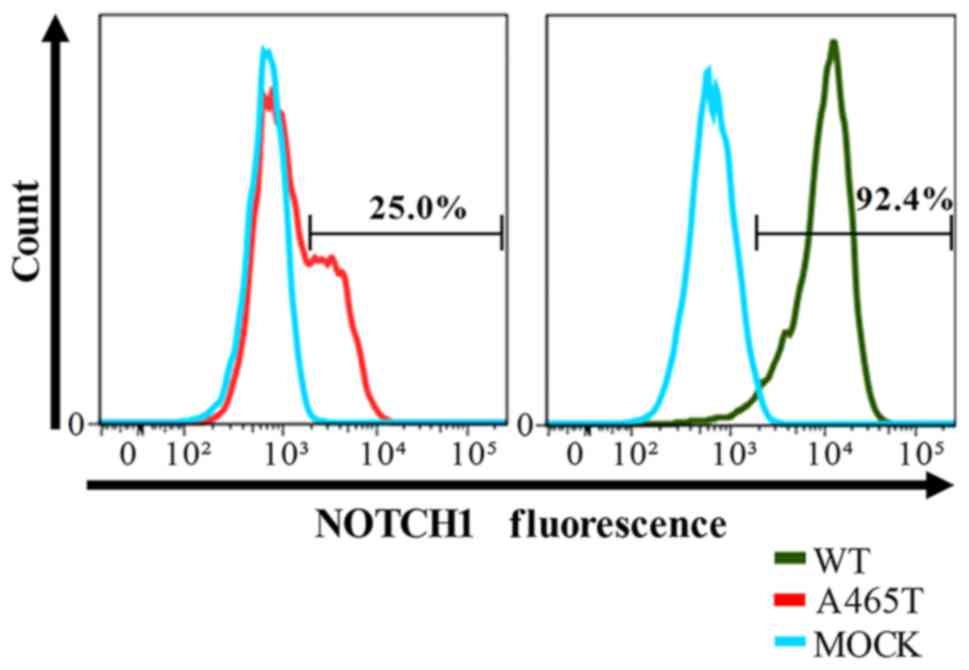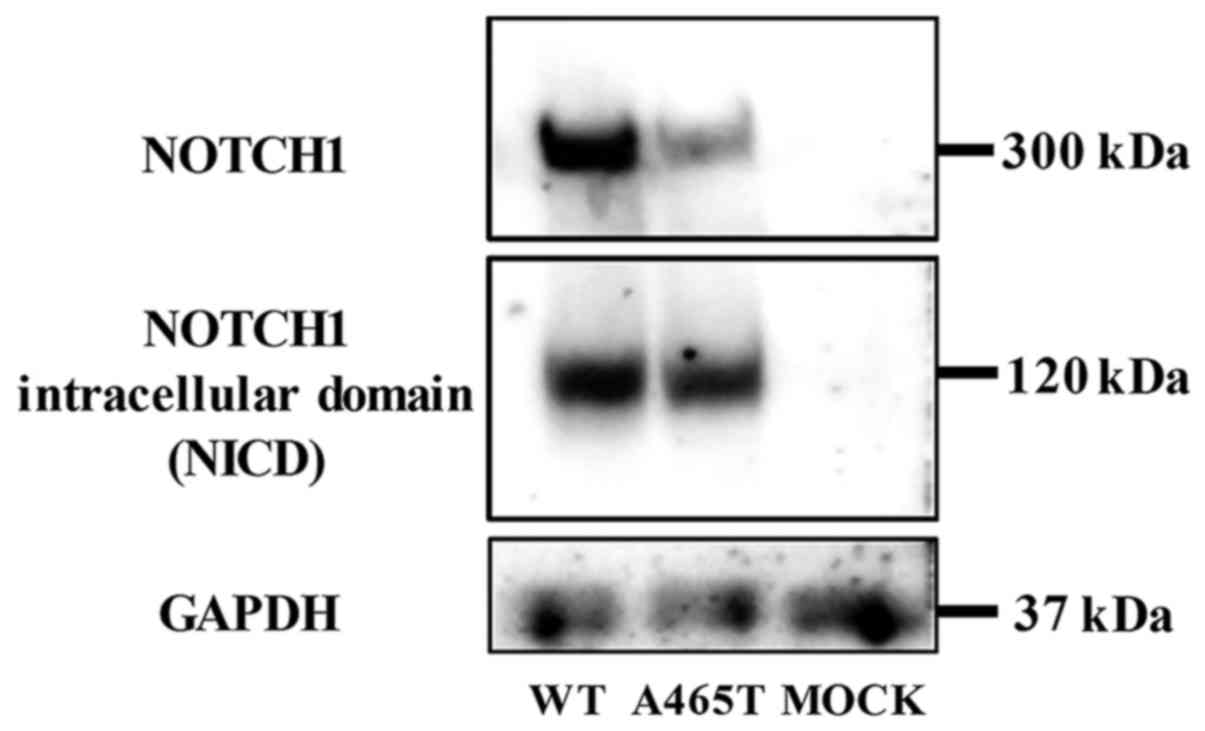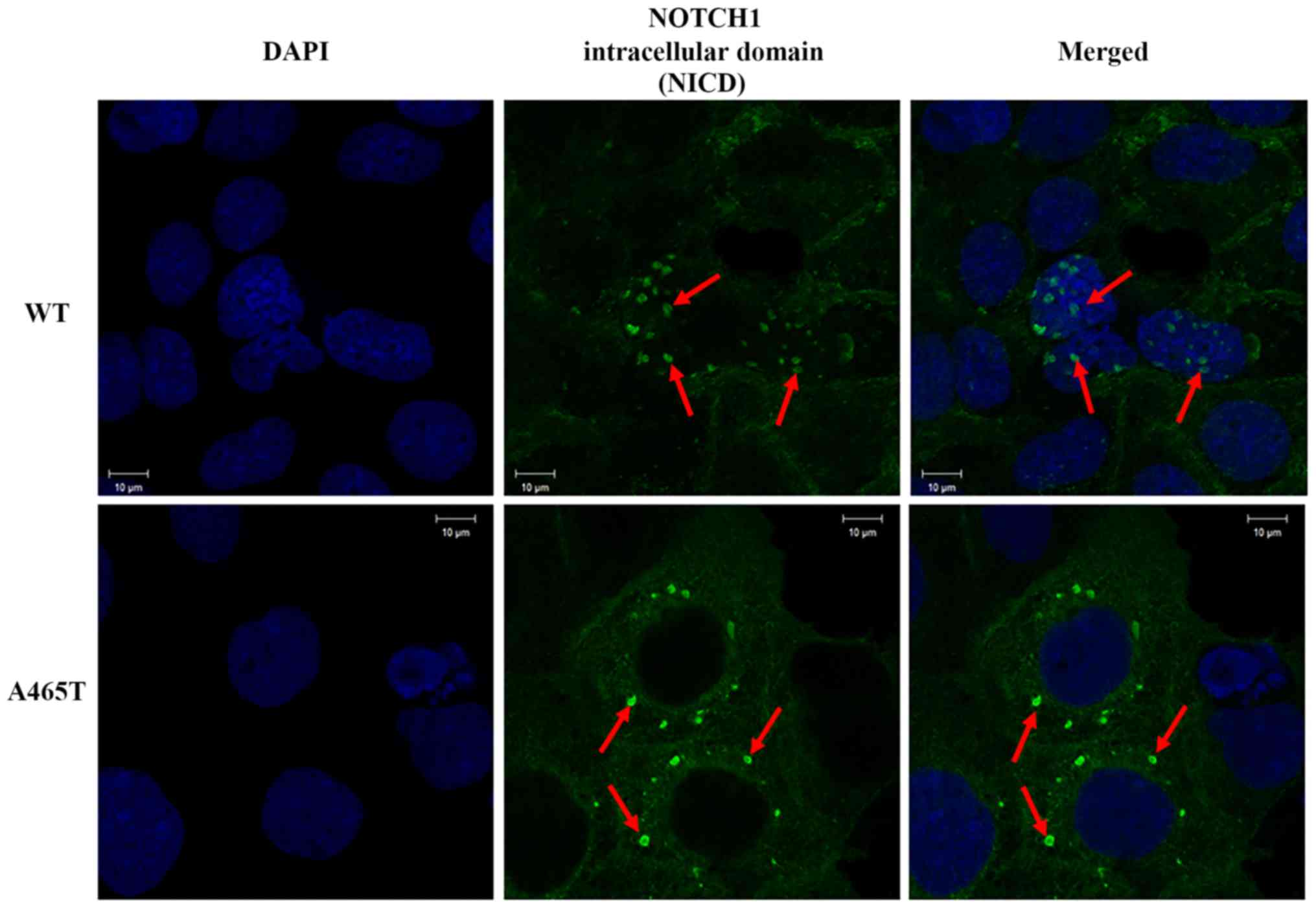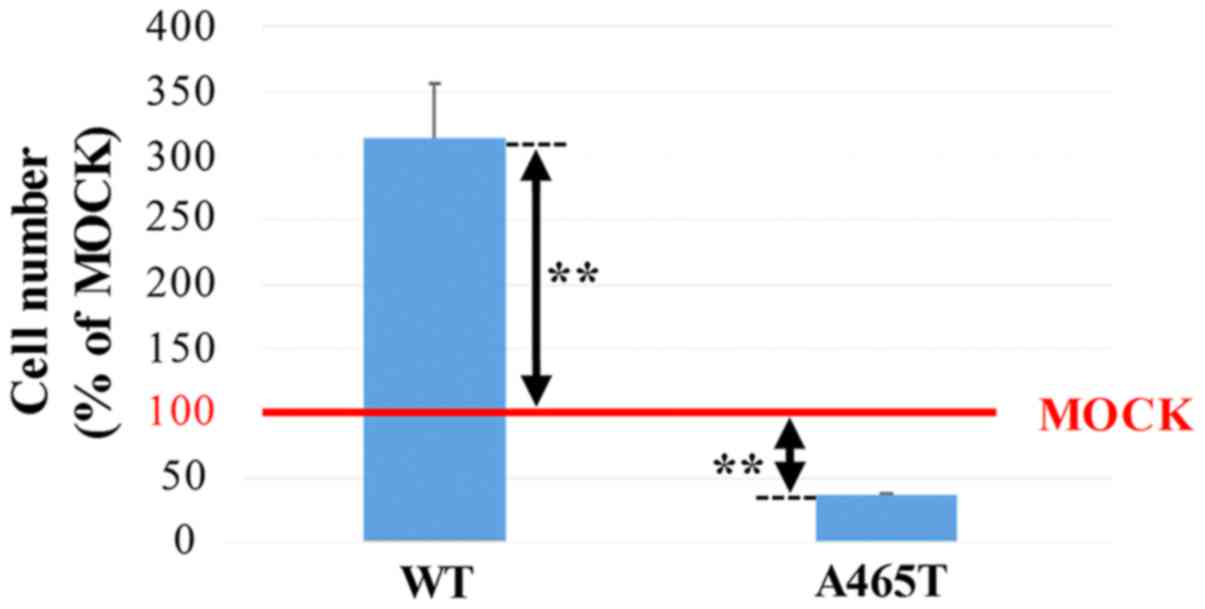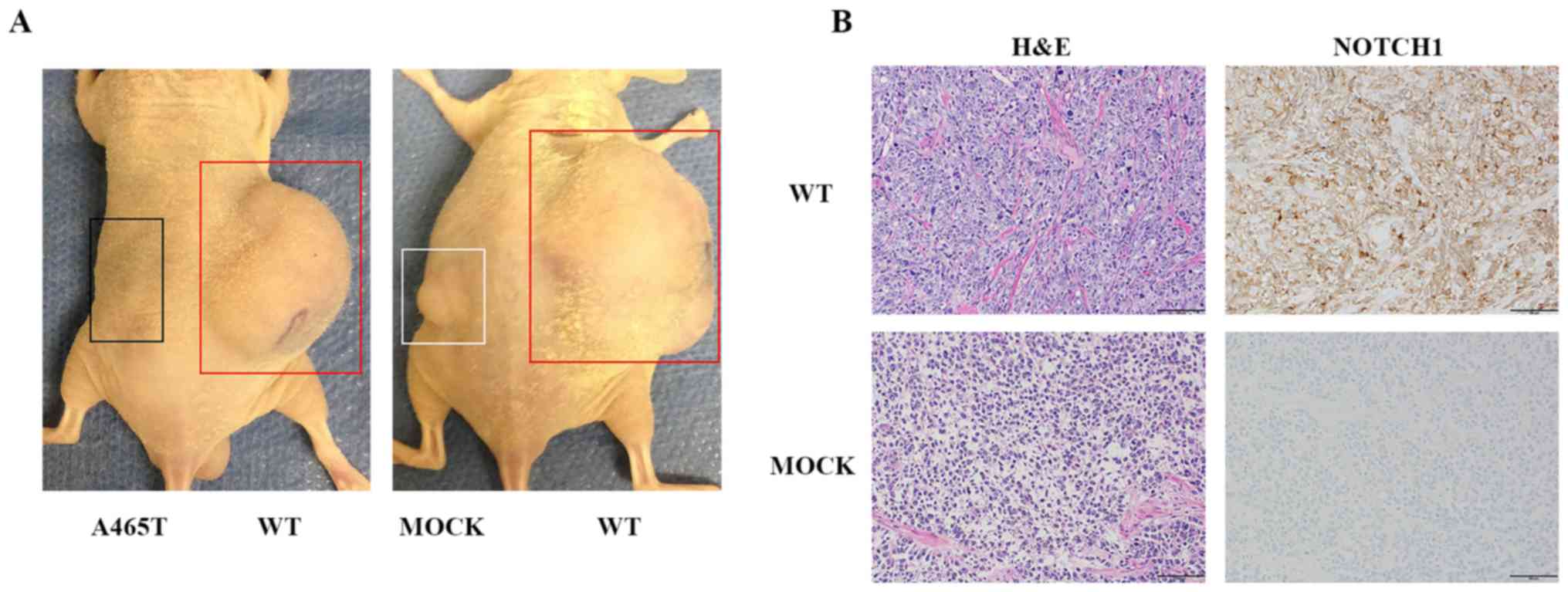|
1
|
Chaturvedi AK, Anderson WF,
Lortet-Tieulent J, Curado MP, Ferlay J, Franceschi S, Rosenberg PS,
Bray F and Gillison ML: Worldwide trends in incidence rates for
oral cavity and oropharyngeal cancers. J Clin Oncol. 31:4550–4559.
2013. View Article : Google Scholar : PubMed/NCBI
|
|
2
|
Warnakulasuriya S: Global epidemiology of
oral and oropharyngeal cancer. Oral Oncol. 45:309–316. 2009.
View Article : Google Scholar : PubMed/NCBI
|
|
3
|
Pfister DG, Spencer S, Brizel DM, Burtness
B, Busse PM, Caudell JJ, Cmelak AJ, Colevas AD, Dunphy F, Eisele
DW, et al: Head and Neck Cancers, Version 1.2015. J Natl Compr Canc
Netw. 13:847–856. 2015. View Article : Google Scholar : PubMed/NCBI
|
|
4
|
Chi LM, Lee CW, Chang KP, Hao SP, Lee HM,
Liang Y, Hsueh C, Yu CJ, Lee IN, Chang YJ, et al: Enhanced
interferon signaling pathway in oral cancer revealed by
quantitative proteome analysis of microdissected specimens using
16O/18O labeling and integrated two-dimensional LC-ESI-MALDI tandem
MS. Mol Cell Proteomics. 8:1453–1474. 2009. View Article : Google Scholar : PubMed/NCBI
|
|
5
|
Mazumdar A, Henderson YC, El-Naggar AK,
Sen S and Clayman GL: Aurora kinase A inhibition and paclitaxel as
targeted combination therapy for head and neck squamous cell
carcinoma. Head Neck. 31:625–634. 2009. View Article : Google Scholar : PubMed/NCBI
|
|
6
|
Colella S, Richards KL, Bachinski LL,
Baggerly KA, Tsavachidis S, Lang JC, Schuller DE and Krahe R:
Molecular signatures of metastasis in head and neck cancer. Head
Neck. 30:1273–1283. 2008. View Article : Google Scholar : PubMed/NCBI
|
|
7
|
Stransky N, Egloff AM, Tward AD, Kostic
AD, Cibulskis K, Sivachenko A, Kryukov GV, Lawrence MS, Sougnez C,
McKenna A, et al: The mutational landscape of head and neck
squamous cell carcinoma. Science. 333:1157–1160. 2011. View Article : Google Scholar : PubMed/NCBI
|
|
8
|
Vettore AL, Ramnarayanan K, Poore G, Lim
K, Ong CK, Huang KK, Leong HS, Chong FT, Lim TK, Lim WK, et al:
Mutational landscapes of tongue carcinoma reveal recurrent
mutations in genes of therapeutic and prognostic relevance. Genome
Med. 7:982015. View Article : Google Scholar : PubMed/NCBI
|
|
9
|
India Project Team of the International
Cancer Genome Consortium: Mutational landscape of gingivo-buccal
oral squamous cell carcinoma reveals new recurrently-mutated genes
and molecular subgroups. Nat Commun. 4:28732013.PubMed/NCBI
|
|
10
|
Ojesina AI, Lichtenstein L, Freeman SS,
Pedamallu CS, Imaz-Rosshandler I, Pugh TJ, Cherniack AD, Ambrogio
L, Cibulskis K, Bertelsen B, et al: Landscape of genomic
alterations in cervical carcinomas. Nature. 506:371–375. 2014.
View Article : Google Scholar : PubMed/NCBI
|
|
11
|
Ranganathan P, Weaver KL and Capobianco
AJ: Notch signalling in solid tumours: A little bit of everything
but not all the time. Nat Rev Cancer. 11:338–351. 2011. View Article : Google Scholar : PubMed/NCBI
|
|
12
|
Vicente C, Schwab C, Broux M, Geerdens E,
Degryse S, Demeyer S, Lahortiga I, Elliott A, Chilton L, La Starza
R, et al: Targeted sequencing identifies associations between
IL7R-JAK mutations and epigenetic modulators in T-cell acute
lymphoblastic leukemia. Haematologica. 100:1301–1310. 2015.
View Article : Google Scholar : PubMed/NCBI
|
|
13
|
Radtke F and Raj K: The role of Notch in
tumorigenesis: Oncogene or tumour suppressor? Nat Rev Cancer.
3:756–767. 2003. View
Article : Google Scholar : PubMed/NCBI
|
|
14
|
Leong KG and Karsan A: Recent insights
into the role of Notch signaling in tumorigenesis. Blood.
107:2223–2233. 2006. View Article : Google Scholar : PubMed/NCBI
|
|
15
|
Yap LF, Lee D, Khairuddin A, Pairan MF,
Puspita B, Siar CH and Paterson IC: The opposing roles of NOTCH
signalling in head and neck cancer: A mini review. Oral Dis.
21:850–857. 2015. View Article : Google Scholar : PubMed/NCBI
|
|
16
|
Aoyama K, Ota Y, Kajiwara K, Hirayama N
and Kimura M: Frequent mutations in NOTCH1 ligand-binding regions
in Japanese oral squamous cell carcinoma. Biochem Biophys Res
Commun. 452:980–985. 2014. View Article : Google Scholar : PubMed/NCBI
|
|
17
|
Mizutani A, Kikkawa E, Matsuno A,
Shigenari A, Okinaga H, Murakami M, Ishida H, Tanaka M and Inoko H:
Modified S/MAR episomal vectors for stably expressing fluorescent
protein-tagged transgenes with small cell-to-cell fluctuations.
Anal Biochem. 443:113–116. 2013. View Article : Google Scholar : PubMed/NCBI
|
|
18
|
Agrawal N, Frederick MJ, Pickering CR,
Bettegowda C, Chang K, Li RJ, Fakhry C, Xie TX, Zhang J, Wang J, et
al: Exome sequencing of head and neck squamous cell carcinoma
reveals inactivating mutations in NOTCH1. Science. 333:1154–1157.
2011. View Article : Google Scholar : PubMed/NCBI
|
|
19
|
Sun Y, Zhang R, Zhou S and Ji Y:
Overexpression of Notch1 is associated with the progression of
cervical cancer. Oncol Lett. 9:2750–2756. 2015.PubMed/NCBI
|
|
20
|
Su BH, Qu J, Song M, Huang XY, Hu XM, Xie
J, Zhao Y, Ding LC, She L, Chen J, et al: NOTCH1 signaling
contributes to cell growth, anti-apoptosis and metastasis in
salivary adenoid cystic carcinoma. Oncotarget. 5:6885–6895. 2014.
View Article : Google Scholar : PubMed/NCBI
|
|
21
|
Wang Y, Yu S, Huang D, Cui M, Hu H, Zhang
L, Wang W, Parameswaran N, Jackson M, Osborne B, et al: Cellular
prion protein mediates pancreatic cancer cell survival and invasion
through association with and enhanced signaling of Notch1. Am J
Pathol. 186:2945–2956. 2016. View Article : Google Scholar : PubMed/NCBI
|
|
22
|
Hsu KW, Fang WL, Huang KH, Huang TT, Lee
HC, Hsieh RH, Chi CW and Yeh TS: Notch1 pathway-mediated
microRNA-151-5p promotes gastric cancer progression. Oncotarget.
7:38036–38051. 2016. View Article : Google Scholar : PubMed/NCBI
|
|
23
|
Croquelois A, Domenighetti AA, Nemir M,
Lepore M, Rosenblatt-Velin N, Radtke F and Pedrazzini T: Control of
the adaptive response of the heart to stress via the Notch1
receptor pathway. J Exp Med. 205:3173–3185. 2008. View Article : Google Scholar : PubMed/NCBI
|
|
24
|
Pickering CR, Zhang J, Yoo SY, Bengtsson
L, Moorthy S, Neskey DM, Zhao M, Alves Ortega MV, Chang K, Drummond
J, et al: Integrative genomic characterization of oral squamous
cell carcinoma identifies frequent somatic drivers. Cancer Discov.
3:770–781. 2013. View Article : Google Scholar : PubMed/NCBI
|
|
25
|
Shao S and Zhao X, Zhang X, Luo M, Zuo X,
Huang S, Wang Y, Gu S and Zhao X: Notch1 signaling regulates the
epithelial-mesenchymal transition and invasion of breast cancer in
a Slug-dependent manner. Mol Cancer. 14:282015. View Article : Google Scholar : PubMed/NCBI
|
|
26
|
Ma L, Dong P, Liu L, Gao Q, Duan M, Zhang
S, Chen S, Xue R and Wang X: Overexpression of protein
O-fucosyltransferase 1 accelerates hepatocellular carcinoma
progression via the Notch signaling pathway. Biochem Biophys Res
Commun. 473:503–510. 2016. View Article : Google Scholar : PubMed/NCBI
|
|
27
|
Okajima T, Xu A, Lei L and Irvine KD:
Chaperone activity of protein O-fucosyltransferase 1 promotes notch
receptor folding. Science. 307:1599–1603. 2005. View Article : Google Scholar : PubMed/NCBI
|
|
28
|
Yoshida R, Nagata M, Nakayama H,
Niimori-Kita K, Hassan W, Tanaka T, Shinohara M and Ito T: The
pathological significance of Notch1 in oral squamous cell
carcinoma. Lab Invest. 93:1068–1081. 2013. View Article : Google Scholar : PubMed/NCBI
|
|
29
|
Sun W, Gaykalova DA, Ochs MF, Mambo E,
Arnaoutakis D, Liu Y, Loyo M, Agrawal N, Howard J, Li R, et al:
Activation of the NOTCH pathway in head and neck cancer. Cancer
Res. 74:1091–1104. 2014. View Article : Google Scholar : PubMed/NCBI
|
|
30
|
Jung J: Human tumor xenograft models for
preclinical assessment of anticancer drug development. Toxicol Res.
30:1–5. 2014. View Article : Google Scholar : PubMed/NCBI
|
|
31
|
Weber JM and Calvi LM: Notch signaling and
the bone marrow hematopoietic stem cell niche. Bone. 46:281–285.
2010. View Article : Google Scholar : PubMed/NCBI
|



